A culturally relevant math class? Indeed, my friend, it can. There is often a misconception that math classes can’t be culturally relevant or shouldn’t be culturally relevant. It should be all about the numbers. There is no place for culture. I think this is because our definition of culture is so narrow. If we were to expand our definition of culture, the impact of math lessons would be 10 fold. Check out the blog post titled, “What is culture? How can we use it to unlock exciting and remarkable student potential?” I share a much more robust definition of the word.
Before we can decide if a math class can be culturally relevant, I want to define this concept. A culturally responsive and relevant classroom is a space where all of your students are affirmed, welcomed, and celebrated through instruction because you are 1) in tune with your own culture and 2) in tune with and using the culture of your students to design your lessons.

Culturally responsive classrooms are spaces where your students are more engaged because they see the point of the lesson. The students know that the lessons are relevant to them, not just today, but in the future. Math is all about analyzing problems and discovering solutions which is one of the ultimate life lessons. Gospel singer, Erica Campbell said, “How can we learn how to lose without losing IT.” The math classroom is the perfect platform to learn this lesson. We often don’t leverage it.
Creating culturally responsive lessons puts a focus on the life long lessons being taught through curriculum and content. Therefore, it becomes easier to weave relevance into every moment with your students.
I want to share three tips for effectively creating culturally relevant and responsive math lessons so your students are more engaged, experience increased retention of information and increased levels of academic achievement. All of this helps increase your students confidence in their academic identity.
The three tips are 1) reflect, 2) keep learning, and 3)implement (take action)
Culturally Relevant Math Tip 1: Take time to reflect
As you are reflecting, I want you to think about your classroom as a whole. Creating a culturally responsive classroom and culturally relevant math lessons is a whole vibe. It’s not just about creating social justice math lessons or including a diverse range of names in a word problem. That is part of it, but it’s the overall feel of the classroom that allows the lessons to land.
Instead, I want you to begin by thinking about the classroom rules, expectations you hold your students to, and norms that have been established. Then, think about how you created them and why you created them? Was there anyone that helped you create these rules? Are there life experiences that clearly impact the rules and expectations you set? Are you modeling your classroom after one of your former teachers, another teacher in the building? Many times we make decisions about our classroom setup and structure without realizing the impact our own cultural beliefs and norms, life experiences, and schooling impact it.
Next, think about the students in your classroom. Are the established rules, expectations, and norms allowing them to thrive? Really think about this? Are the rules in your classroom foreign or familiar to your students? Do the rules line up with the things they value? Why or why not?
Do the rules, expectations and norms allow your students to feel comfortable learning, contributing, failing forward? OR are the rules more geared toward your comfort. I am not saying you should not be comfortable in your own classroom, you absolutely should. The classroom however, is a partnership space. It is a space of knowledge and thought exchange. People who do not feel comfortable will not exchange ideas and share thoughts.
Finally, have you talked through these rules with yourself (reflection), or with a colleague (accountability) to see where there might be a breakdown in communication and understanding?
For example, maybe one rule is that students always complete work independently and then they can chat with a table partner. What if some children come from a households where everyone is encouraged to begin solving problems as a team before breaking into individual thought spaces? How is your rule in direct conflict with the way these children have been raised and encouraged to process?
Will that child be punished for “acting out”, disrespect, not following rules?
Let’s shift away from teacher centered rules, traditions, and expectations to student centered. I’ll be the first to raise my hand and say that the first few years I taught there were more teacher centered practices in place. I was using rules and expectations from when I was a student in the classroom.
Culturally Relevant Math Tip 2: Keep Learning
Secondly, keep learning. Learn about different engagement routines, learning styles, as well as different practices and customs of your students so you may incorporate that knowledge into the classroom. Learn about different dialects and vernacular. Embrace them. Do not immediately reject a vernacular because it is not considered standard by you. Please do not use the vernacular if it is not yours. Focus on allowing all your students to use whatever vernacular is familiar so they feel more comfortable and welcome in the classroom. This will help reduce anxiety around “Am I saying this the right way?” “Will he/she/they stop me and tell me to say it over again?” Instead, create a safe space where students can bravely express what they are thinking and ask questions.

After a level of comfort and safety is established in the classroom, feel free to open up conversations with middle and high school students about different vernaculars and ideas about when and how vernacular should be used. Focus on equipping students by making them aware of societal norms and expectations. Encourage students by informing them that they do have a choice. Empower them with the understanding that some vernaculars, unfortunately are not always as well received by the majority mindset.
Continuing to learn about your students and different ways they will feel most comfortable in the classroom is important toward developing a student’s confidence in the math classroom. Many students already enter the math class with tons of baggage from previous years of schooling. There are words that have been used to label them. Words they have learned to use and label themselves.
Creating a culturally responsive math classroom with culturally relevant lessons shows the students that their thoughts, speech, questions, and voice are welcome. Their form of expression is that of a mathematician. Expanding the definition of a mathematician by displaying a variety of examples of people from different schools of thought, gender identifications, races, socioeconomic backgrounds. It matters.
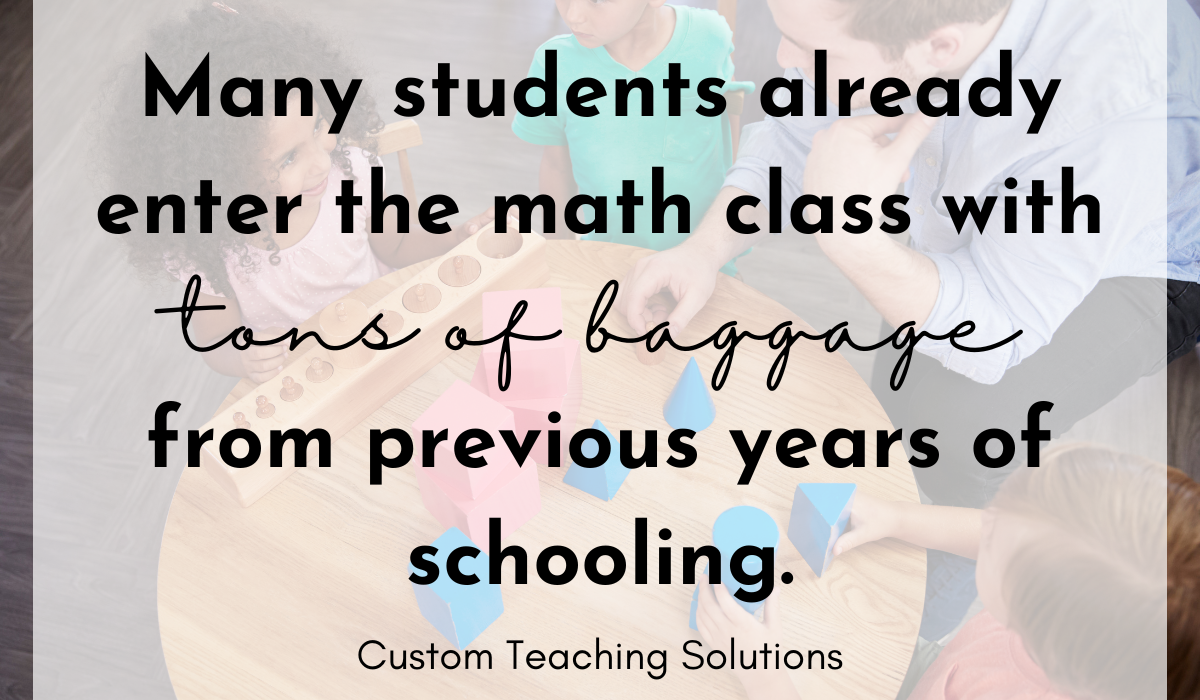
Culturally Relevant Math Tip 3: Take action!
Finally, tip three is to implement. Take action. All that you reflected on and learned about should be used to inform your classroom culture and the development of lessons. You also want to use math problems to provide opportunities to share perspectives. A culturally responsive math classroom is a thinking classroom. It is a classroom where students are encouraged to understand how and why they think the way they do; to understand their processing. It is a place where students are encouraged to share their thinking with others and reflect on questions like, “Well, how do I feel about that?” Students are encouraged to fail forward and make “must”akes. M-U-S-T because that is a part of what we do in life. We fail sometimes and we make mistakes.
Helping students to do that in the math classroom is critical. This is the perfect platform to facilitate growth and learning around problem solving and multi-step processes, and asking for help, and trying again.
To wrap up, when you are looking to create a culturally responsive math classroom, I want you to think about more than just diverse mathematicians and social justice math problems. Those are important, but I want you to focus on creating a space that takes your students’ learning to the next level because there is a connection between the content and your students; the things they care about and will care about for years to come.
Culturally relevant lessons matter because they center process over product, they are student centered and not teacher centered. These lessons allow your students to grow and develop into the next generation of thought leaders.
That is what we want.
For ideas on specific activities and strategies to use in the math classroom check out:
**Custom Teaching Solutions is an affiliate for the Amazon Associates Program which means we receive a commission on every sale that comes through our link.**

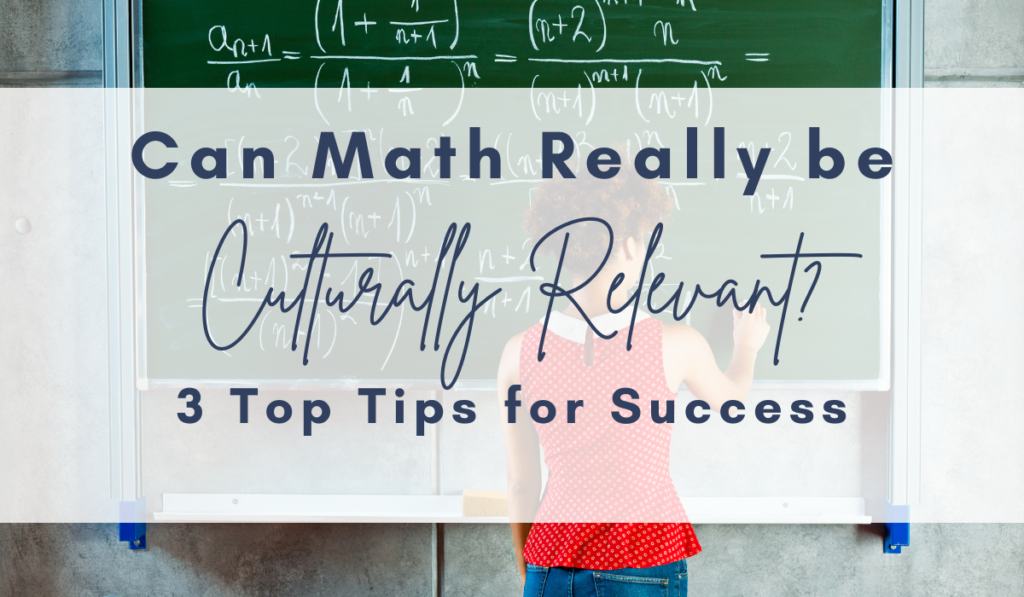
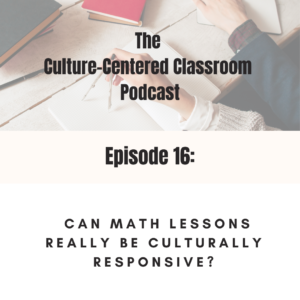



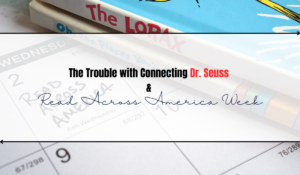
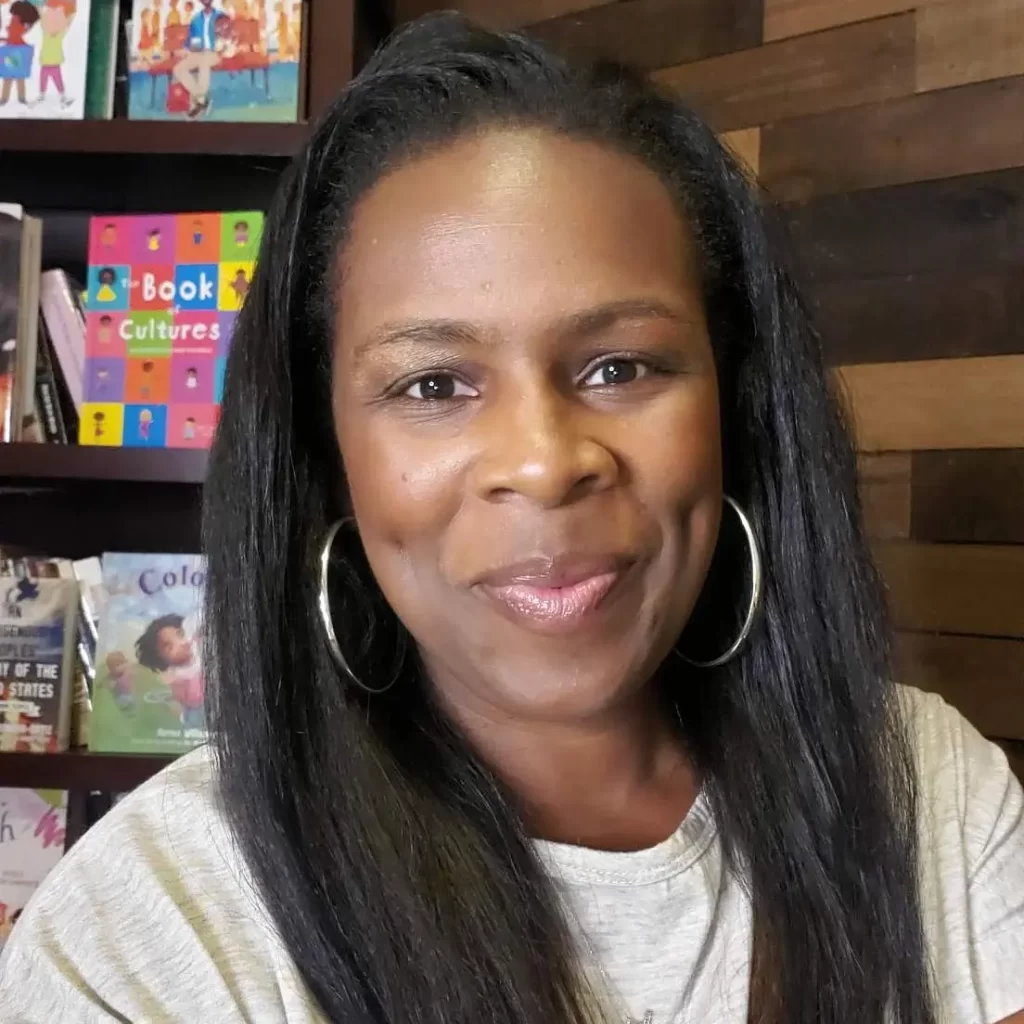
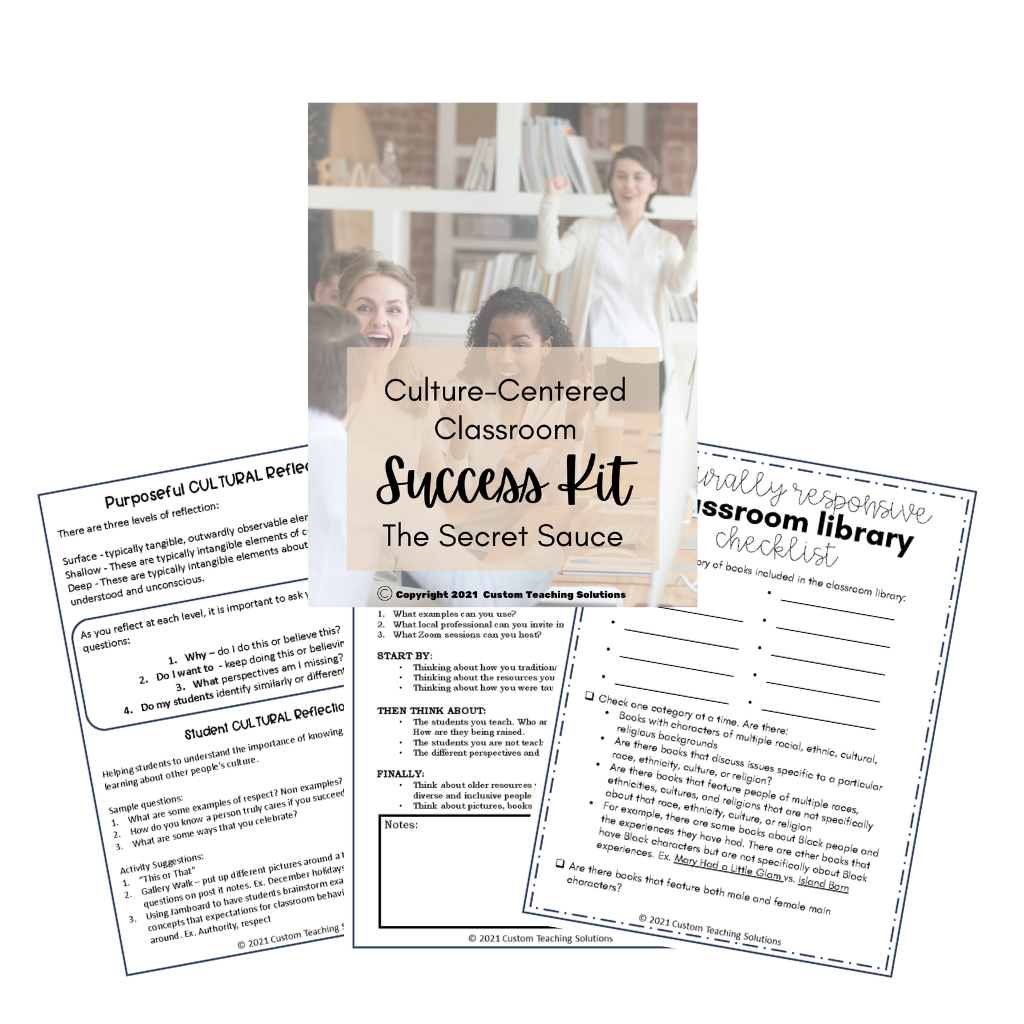
1 thought on “Lessons with Impact Series: Can math really be culturally relevant? Three Tips for success”
Great post!